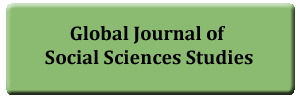Semiotically deconstructing parental and adolescent failed communication: It’s not what they’re saying, it’s their words
DOI:
https://doi.org/10.55284/ajssh.v9i2.1214Keywords:
Adolescents, Communities of practice, Diachronic, Langue, Parole, Signs, Social semiotics, Synchronic.Abstract
Language change and creativity among adolescent language use, is nothing new. However, teachers in schools and parents in homes continue to feel left out of the linguistic figured world of the youth that they teach or raise, often leading to either perceived or real failed communication. In this study I offer a thoughtful and perhaps unique social semiotic analysis of the process and motivation for youth creation of new words or the resemanticization of existing words. Understanding the need for youth to create their own linguistic worlds for acceptance into social worlds has less to do with creating a barrier between them and their parents or teachers and more to do with positive identity development, could be the key for unlocking positive communication with the adults in their lives. Within, I put forth the idea that there exist purposeful in-groups and out-groups, of which the out-groups can be further divided into desirable and un-desirable out-groups. It is important to uncover the different affordances of existing terms and to create inventories of new terms and their synchronic meanings and possible diachronic evolution, in order for parents to understand the motive and need for youth creativity with language. Accepting the possibility, that youth are simply constructing and describing the world around them, changes the paradigm of parental-adolescent communication from a gulf or abyss to a potential bridge or a passageway connecting the two worlds.




